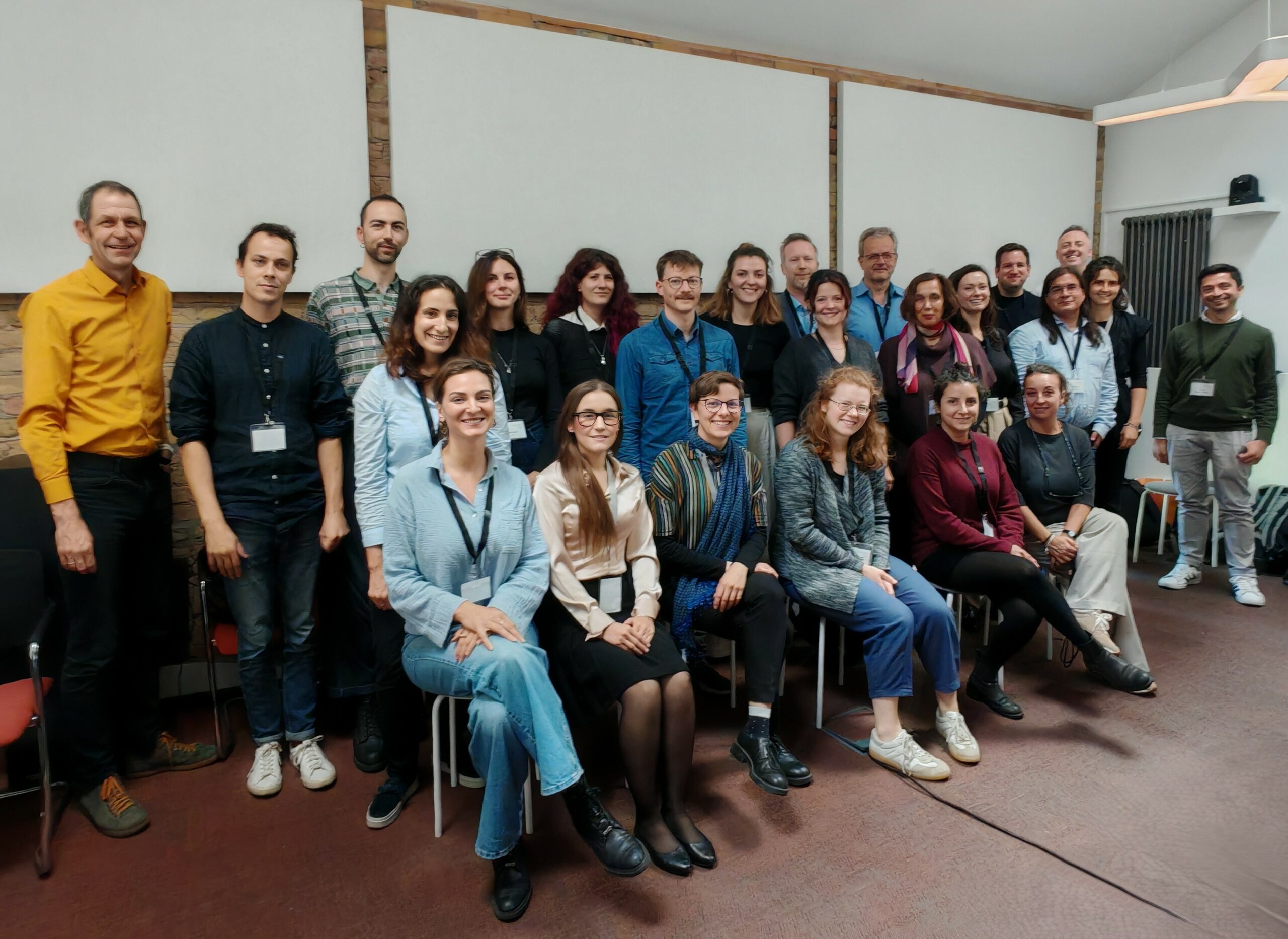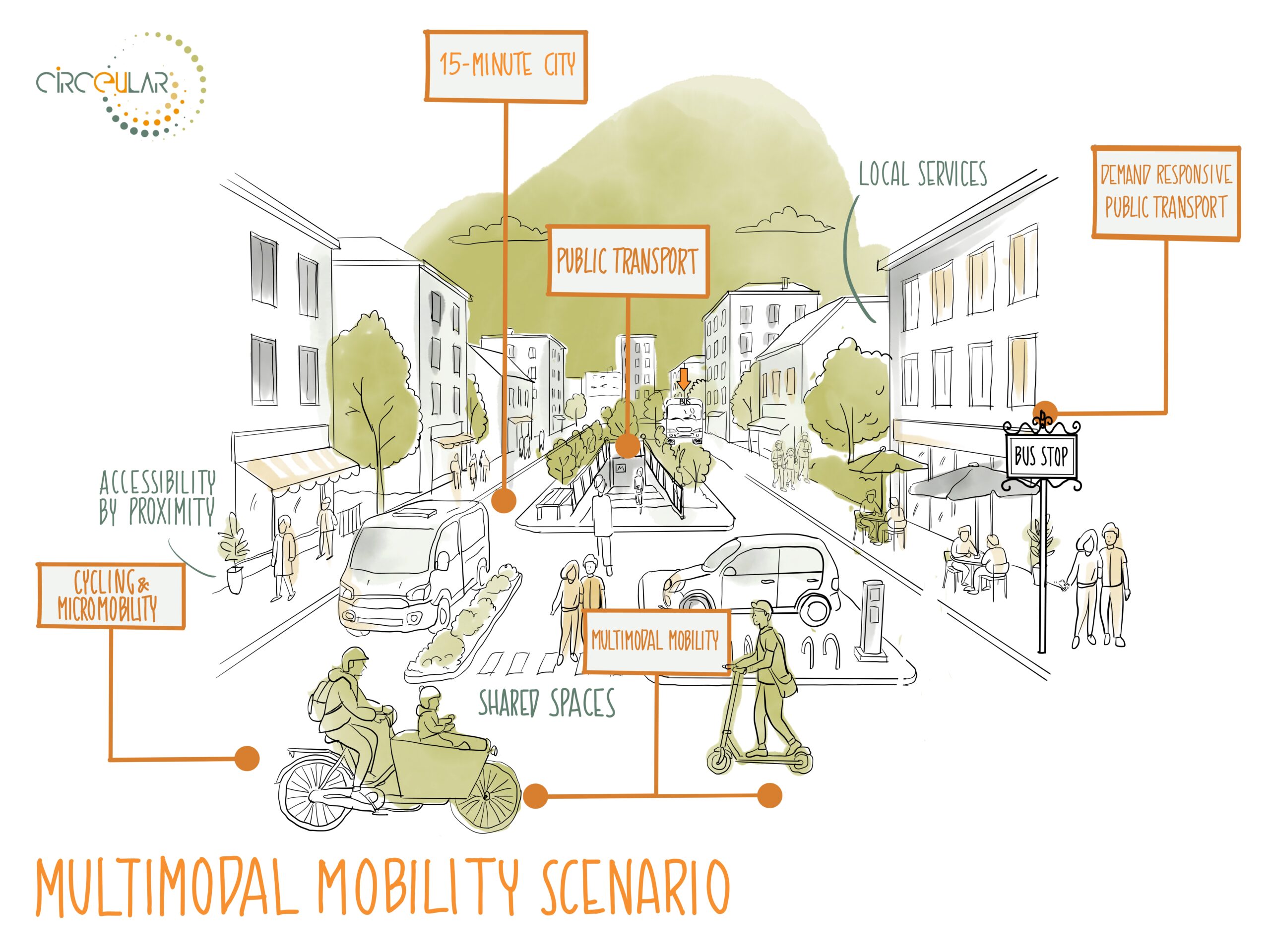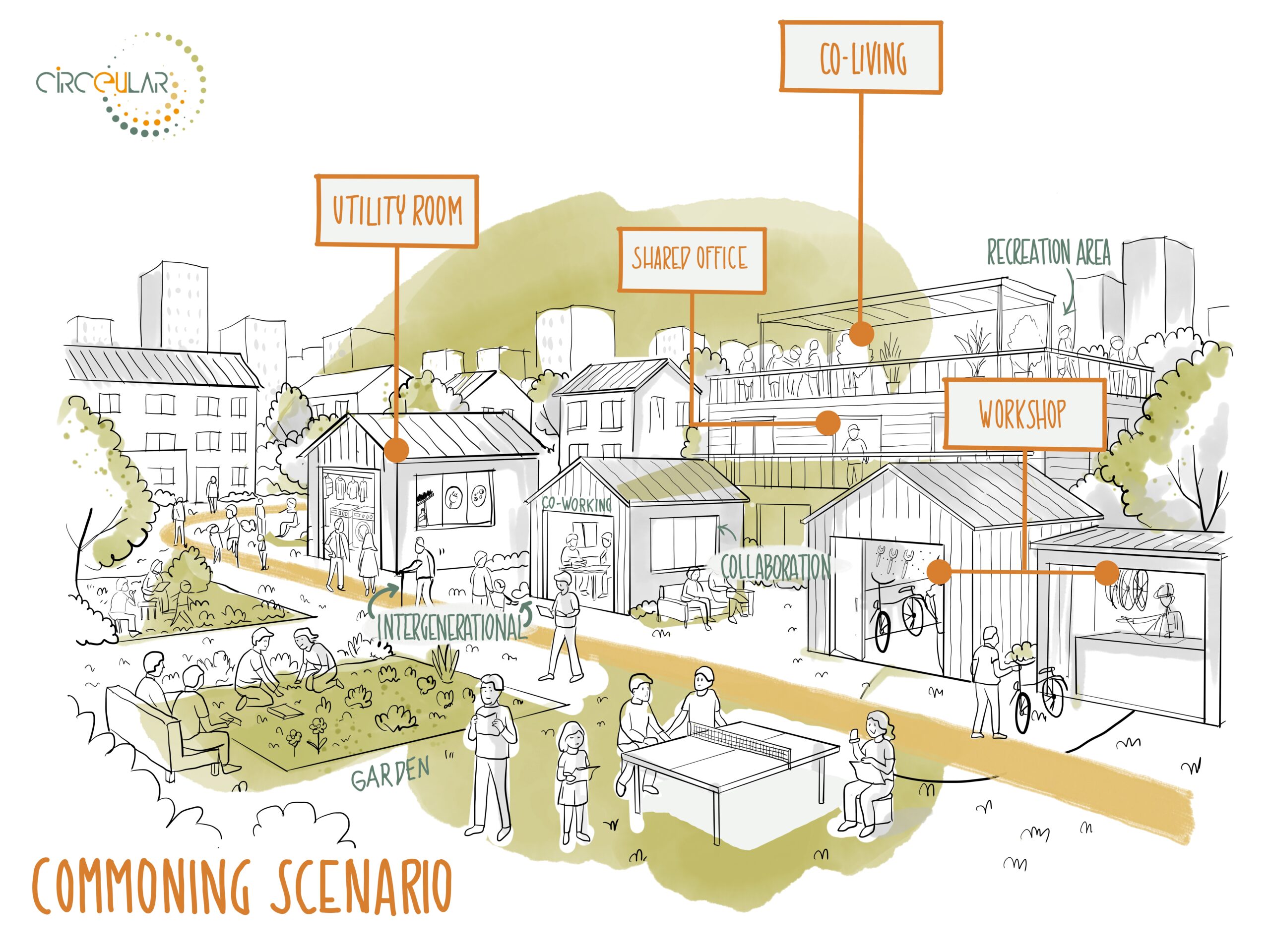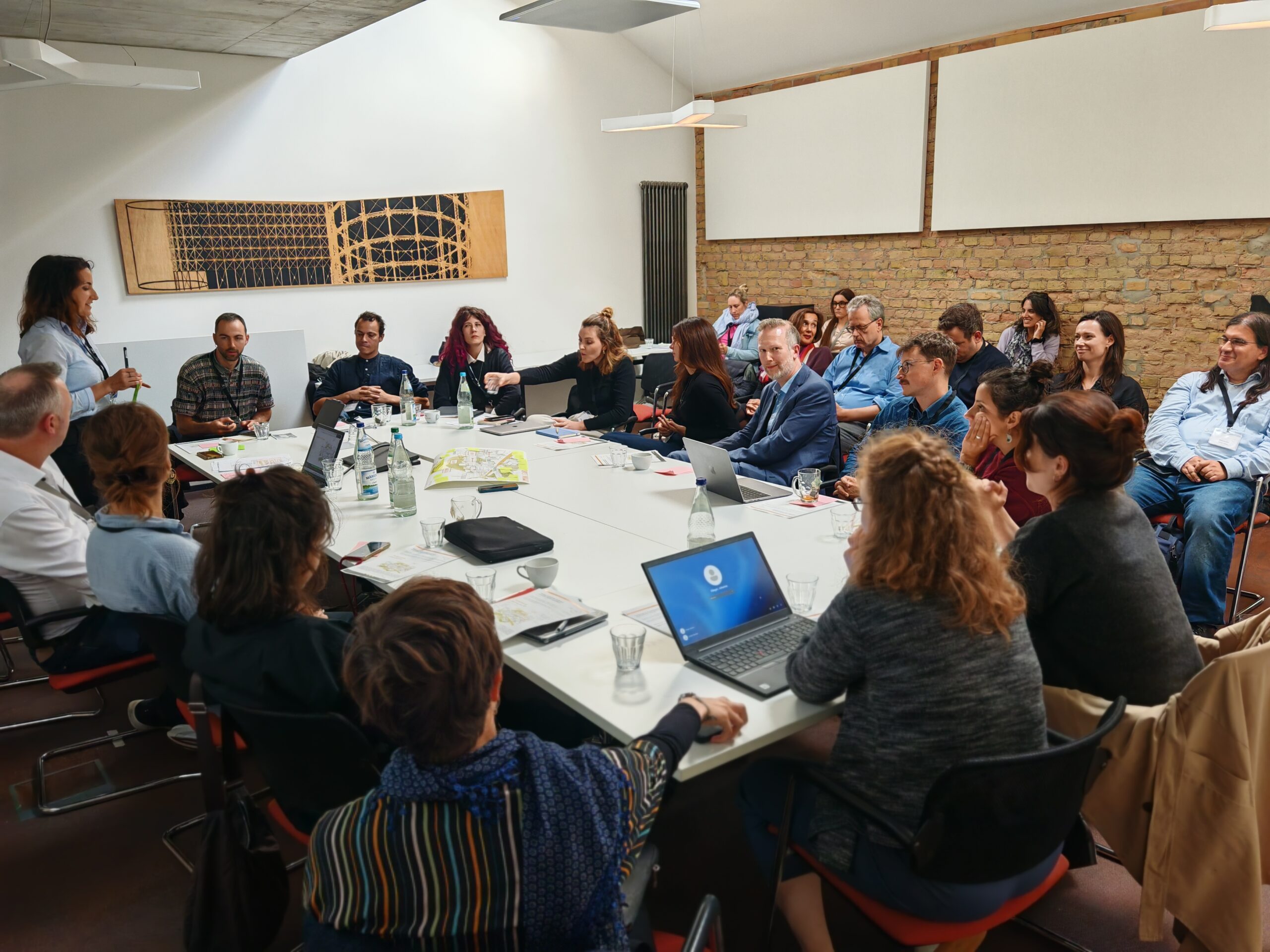
Throughout the CircEUlar project, stakeholder engagement opportunities have been planned at key milestones to ensure that the research is informed, enriched and validated by practitioners. Taking advantage of the Consortium’s gathering in Berlin, research partners T6 Ecosystems, in collaboration with LMU and PIK, organised a stakeholder event on September 23rd.
The role of data and AI in achieving circularity in urban planning
This stakeholder event had two workshops running in parallel. One was an intimate gathering of mainly German and Swiss actors who, led by PIK, firstly, discussed the barriers of implementing circularity in urban planning decisions and then delved into where geospatial analysis and AI applications could help overcome these barriers. The discussion focused on the usefulness of models and pathways in participants’ professions, data availability and accuracy, take-up and use of data, and data development. It was eye-opening for our researchers to better understand the availability, accuracy and accessibility of data for the City of Berlin and other local actors. This practitioner insight will enable to better shape and present CircEUlar data through tools like EUBUCCO and AI4UP. AI4UP, a toolkit co-developed with CircEUlar, explores how geospatial data and machine learning can support urban planners in identifying and implementing low-carbon and climate-resilient solutions at building and neighbourhood scale. The discussion was focused on how data can be used to future-proof our cities in terms of sustainability and circularity.
Future visions highlighting circular practices for housing and mobility
In parallel, a workshop entitled “Towards Net-Zero through a Circular Economy. Pathways to circularity for the built environment: how do we get there?” was run by T6 Ecosystems in collaboration with LMU. This session brought together quadruple helix stakeholders[1[: representatives from policy (e.g. German Federal Environment Agency, Berlin city government, Municipal Housing Agencies), industry (e.g. main public transport company of Berlin, urban planning firms), research (e.g. universities, research institutes and consultancies, think tanks) and civil society (e.g. NGOs active in housing and mobility, advocacy associations) came together to discuss how we can achieve a more circular future for the built environment. Participants were introduced to the emerging findings on circular consumption practices from CircEUlar’s citizen survey, with a particular focus on the German case study, and engaged in participatory backcasting across key circular housing and mobility visions for the future. As explained by Bibri[2] earlier and Gold[3] more recently, backcasting is a normative, goal-oriented, and problem-solving approach, often used in planning, that starts with a desired future state and works backward to identify the actions required to reach it. Participants were divided up into two breakout groups one on mobility and one on housing. Attendees were then presented with three differently focused visions for the future represented via carefully designed sketches.


The mobility breakout session looked at visions focusing on car sharing, car shedding (reducing the number of cars owned/ on the road) and multimodal mobility. The housing breakout group explored visions focusing on modular housing, relocation and commoning. After an initial explanation of the various scenarios, participants were asked to allocate three votes across the three visions. The idea was for delegates to draw on their professional experience and select which vision was the most desirable. The mobility group selected the multimodal vision, the housing group selected the commoning vision.
Next, both groups worked collaboratively and collectively to identify the main measures and creative solutions needed to ensure that these visions become reality. The main question was what actions must be taken to achieve the vision. Keeping in mind the long-term climate goals of reducing GHG emissions, participants were invited to identify actions and reflect across different dimensions (PESTLE – Political, Economic, Social, Technological, Legal and Environmental[4]), timeframes (short – mid – long) and stakeholders (local or national government, civil society, industry, etc.).
Housing that brings communities together is possible
The “Commoning Housing” vision was selected because, according to stakeholders, it enables the creation of vibrant, climate-resilient, and healthy neighborhoods, fostering integration between business, commercial, services and housing areas. Some key considerations brought up were the need to understand the different measures needed in neighbourhoods with prevalently rental or owner-occupied homes or private or public/social housing. What made this vision stand out, according to stakeholders, is how it combines community-building, climate resilience, and integrated services like co-working spaces. To turn it into reality, local initiatives can draw on proven examples with implementable blueprints, work through community, private, local and national governance, and use creative financing and subsidies, so scaling up doesn’t rely on goodwill alone.
Rethinking Mobility to reduce travel and boost social justice
When discussing multimodal mobility, stakeholders stated that technology plays a key role in reducing the need for travel, but solutions need to work beyond cities—rural areas matter just as much. Effective implementation requires both enforcing existing rules and introducing new community-based policies. This vision was considered particularly appealing because it builds on other mobility strategies while emphasizing reduced travel, smart spatial planning, and social justice. Priority actions mentioned included combining hard infrastructure with soft policy measures and ensuring that concepts like the 15-minute city extend to suburbs and peripheral areas, not just urban centers.
These were the key insights from the workshop, T6 Ecosystems will do further analysis of the gathered feedback ensuring that it informs the final development of the pathways. In research projects, the value, usability and relevance of the outcomes depends greatly on the pertinence and quality of the technical input integrated during the research process, this is precisely why these sessions are at the core of CircEUlar.

[1] Carayannis, E.G., & Campbell, D.F.J. (2009). ‘Mode 3’ and ‘Quadruple Helix’: toward a 21st-century fractal innovation ecosystem. International Journal of Technology Management, 46(3-4), 201–234.
[2] Bibri, S. E. (2018). Backcasting in futures studies: A synthesized scholarly and planning approach to strategic smart sustainable city development. European Journal of Futures Research, 6(13). https://doi.org/10.1186/s40309-018-0142-z
[3] Gold, M. (2023). How to get started with the backcasting approach (Mutual Learning Exercise on Citizen Science Initiatives – Policy and Practice). European Commission, Directorate-General for Research and Innovation. https://data.europa.eu/doi/10.2777/305248
[4] Johnson, G., Scholes, K., & Whittington, R. (2008). Exploring corporate strategy: Text & cases (8th ed.). Harlow: Pearson Education.Drawing from the original work in Aguilar, F. J. (1967). Scanning the business environment. New York: Macmillan.
